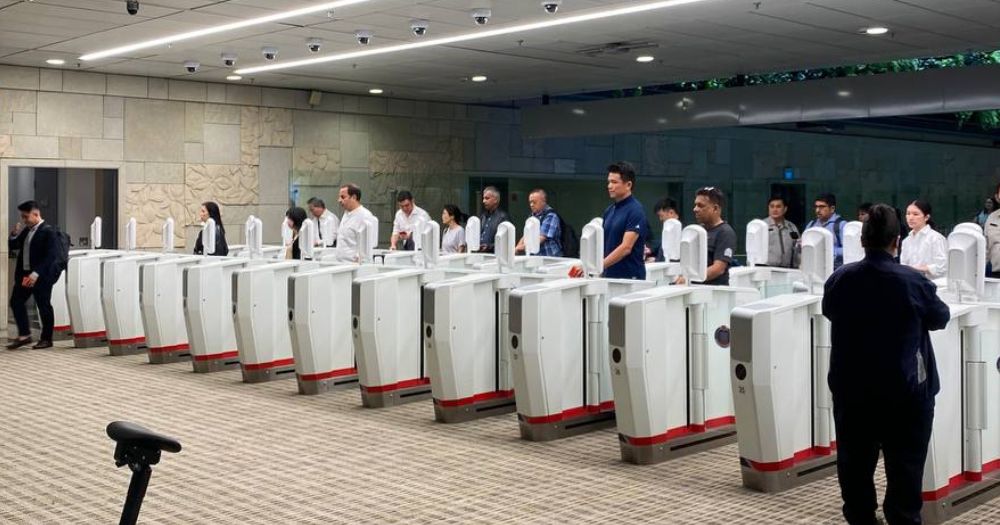By the end of 2024, arriving Singapore residents and all departing travellers will be able to go through immigration without their passports at Changi Airport, Seletar Airport and Marina Bay Cruise Centre Singapore (MBCCS).
Moreover, as of May 2024, all foreign visitors arriving in Singapore can use automated lanes at Changi Airport without the need for prior enrolment.
This was announced on May 17, 2024 by Minister of State for Ministry of Home Affairs and Ministry of National Development Muhammad Faishal Ibrahim.
He was speaking at the 2024 Immigration & Checkpoints Authority (ICA) Workplan Seminar.
According to a statement by ICA, the new developments are part of the "New Clearance Concept" first announced in 2019, which aims to digitalise and automate clearance processes across all immigration checkpoints in Singapore.
"The New Clearance Concept redefines border clearance, making automation the norm at all our checkpoints," Faishal said.
By 2026, 95 per cent of travellers are expected to be able to clear immigration via automated lanes at all checkpoints in Singapore.
Passport-free travel for Singapore residents and departing travellers
By the end of 2024, ICA plans to roll out passport-free, contactless gantries for arriving Singapore residents and all departing travellers.
Those using the passport-free gantries would only need to present their face and iris biometrics to be scanned. Fingerprint scans will be used only as a secondary measure if the face and iris scan fails.
ICA said that passport-free travel will be in place at Changi Airport, Seletar Airport and Marina Bay Cruise Centre Singapore (MBCSS) by the end of this year.
Automated lanes for all foreign visitors at Changi
All foreign visitors, including first-time visitors, can now use automated lanes to enter Singapore on arrival.
According to ICA, Singapore "may be the first in the world" to do so.
Automated lanes were previously provided only for Singaporean travellers.
For foreign travellers to use the automated lanes, they would previously have had to go to a manual counter to enrol their biometrics before being able to use them on departure or subsequent visits.
As previously announced, ICA will still set aside lanes for dedicated use by Singaporeans and permanent residents (PRs), even while foreign visitors are able to clear immigration using automated lanes.
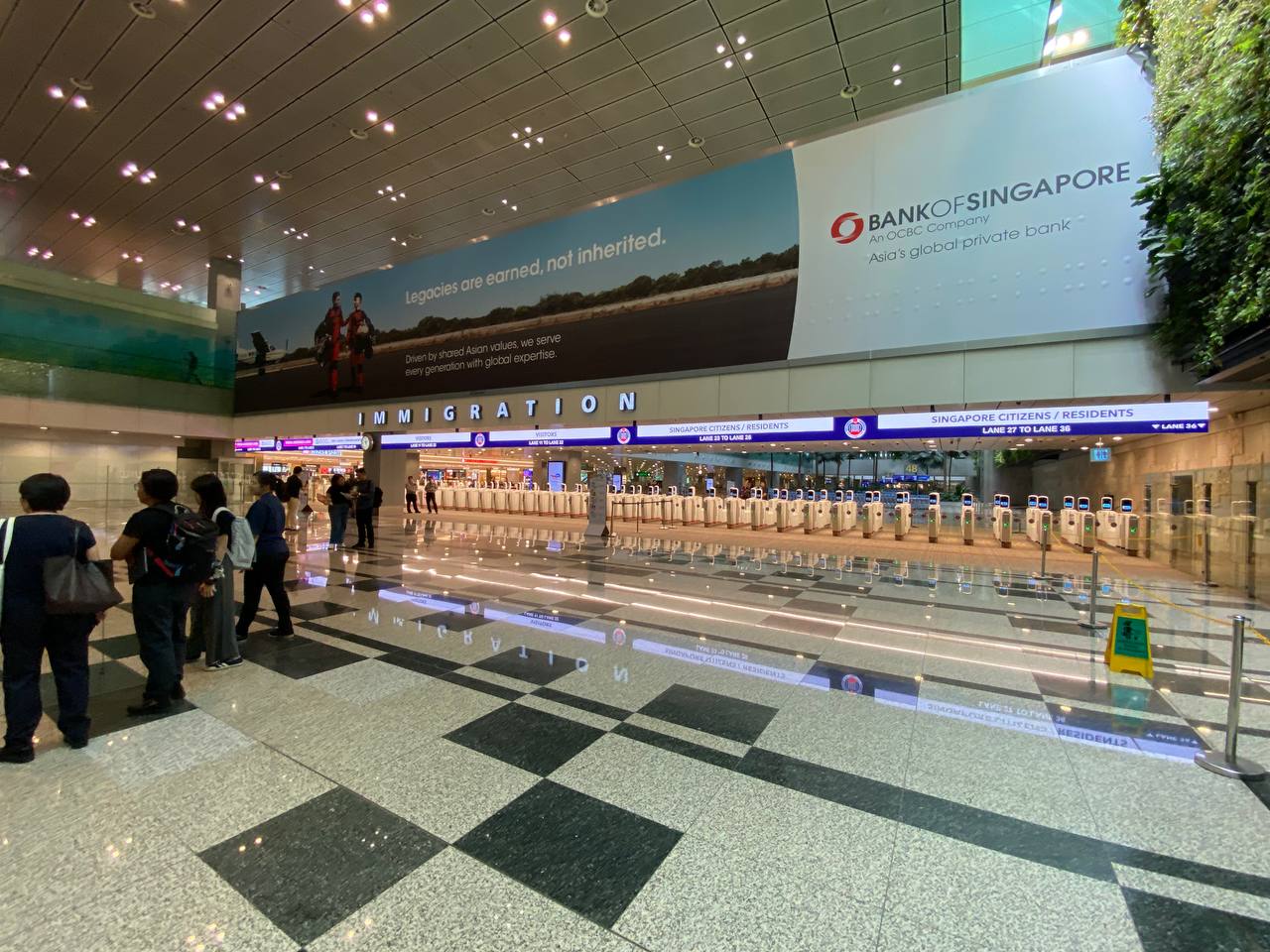 Photo by Tharun Suresh.
Photo by Tharun Suresh.
The process, familiar to Singaporeans coming home, is smooth and fairly hassle-free.
Arriving passengers will scan their passports at the first flapper:
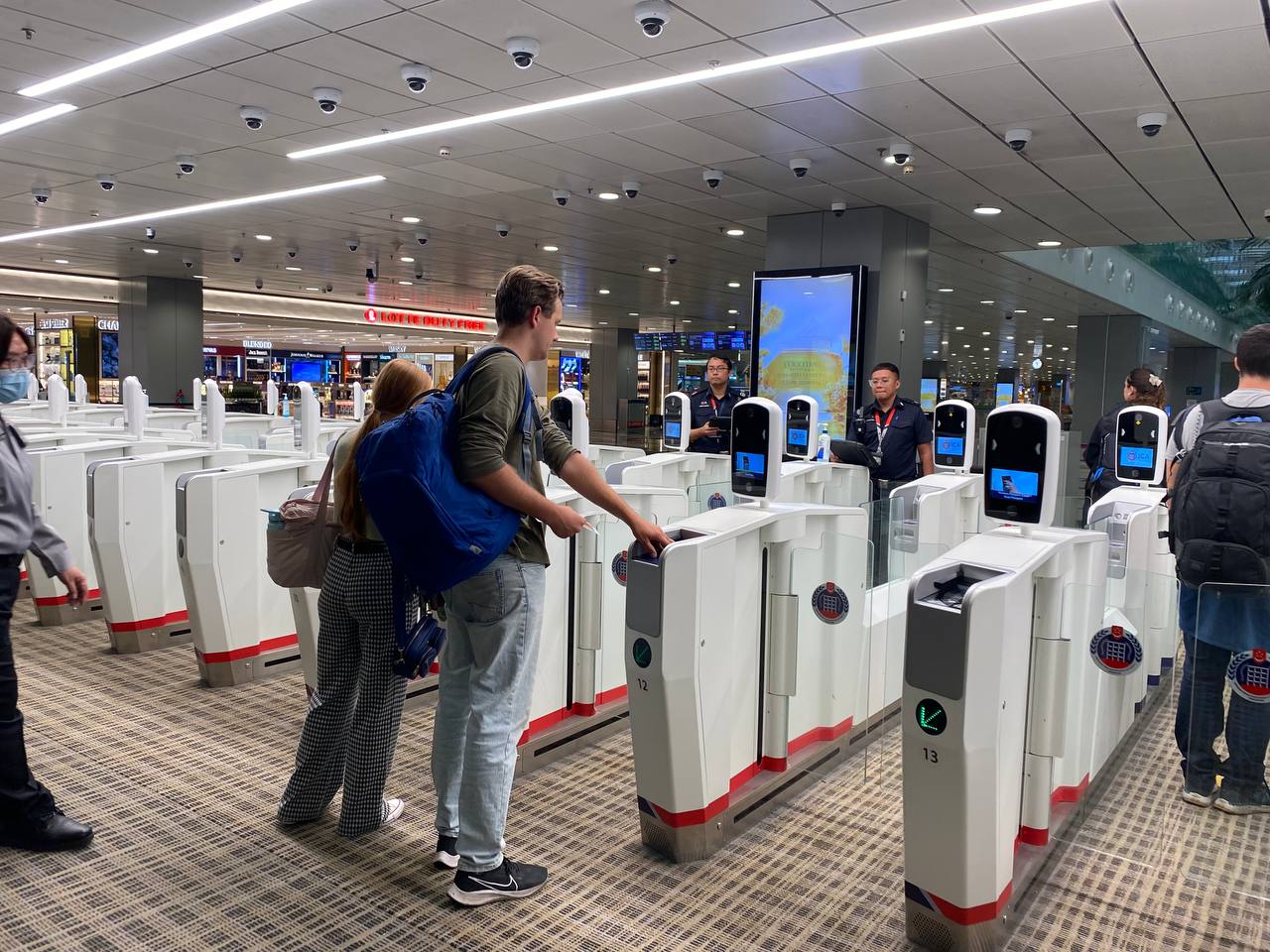 Visitors going through automated gates after arriving in Singapore. Photo by Tharun Suresh.
Visitors going through automated gates after arriving in Singapore. Photo by Tharun Suresh.
They will then have their faces and irises scanned before the second flapper:
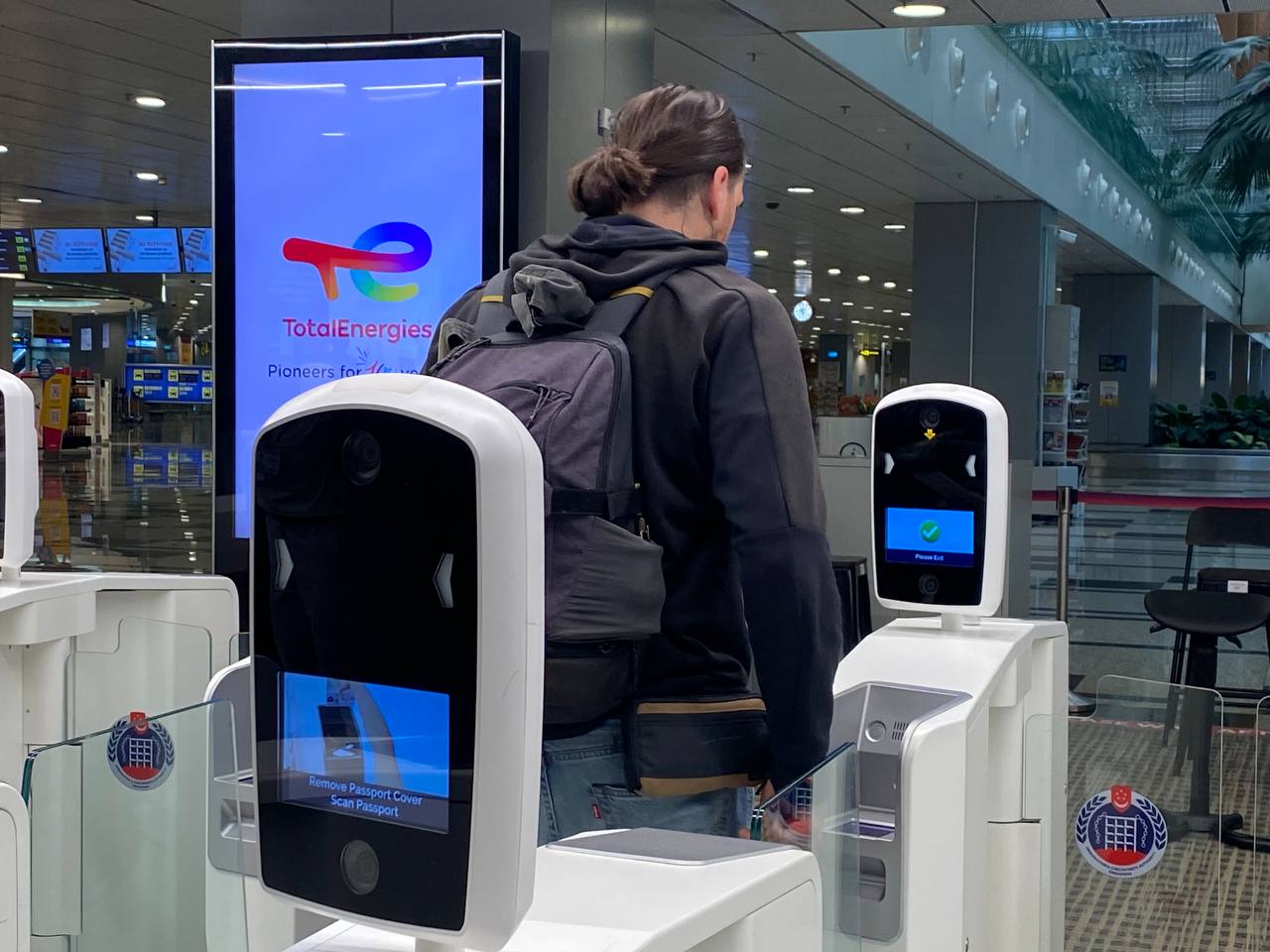 A visitor going through an automated gate at Changi Airport. Photo by Tharun Suresh.
A visitor going through an automated gate at Changi Airport. Photo by Tharun Suresh.
First-time travellers will be required to provide fingerprint data at the second flapper, though repeat travellers will only need to have their faces and irises scanned.
If the face and iris scan fail, travellers will be prompted to have their fingerprints scanned:
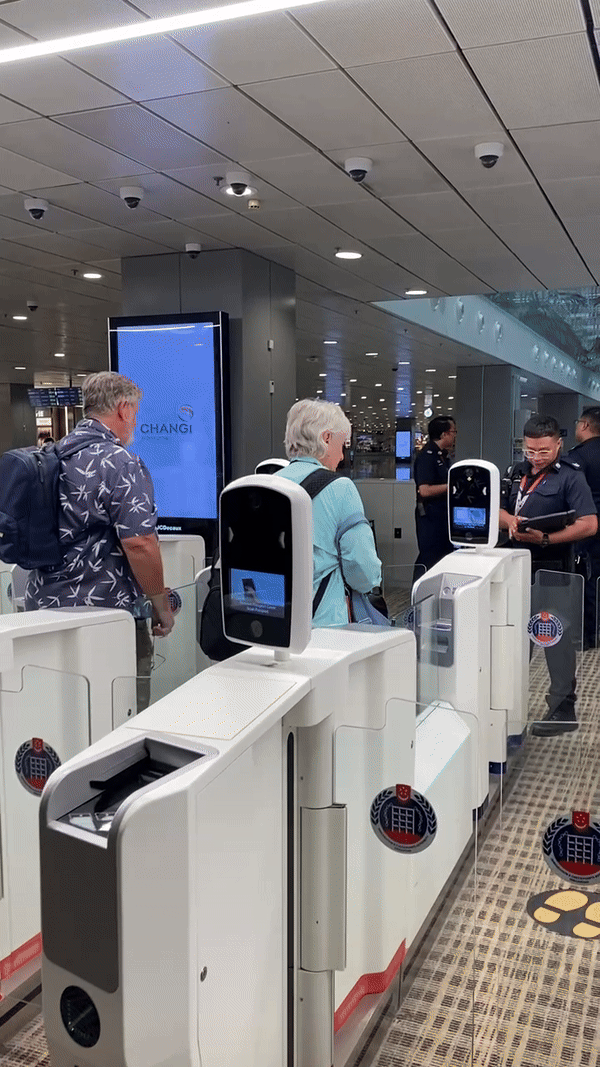 GIF by Tharun Suresh
GIF by Tharun Suresh
While the entire process is automated, ICA officers will be present on-site to assist travellers where necessary.
There are also special automated lanes available for travellers in wheelchairs and family groups of up to four persons.
In 2023, eight special lanes were installed at the bus halls of Woodlands checkpoint, another eight at MBCCS, and 42 across Terminals 1, 2 and 3 of Changi Airport.
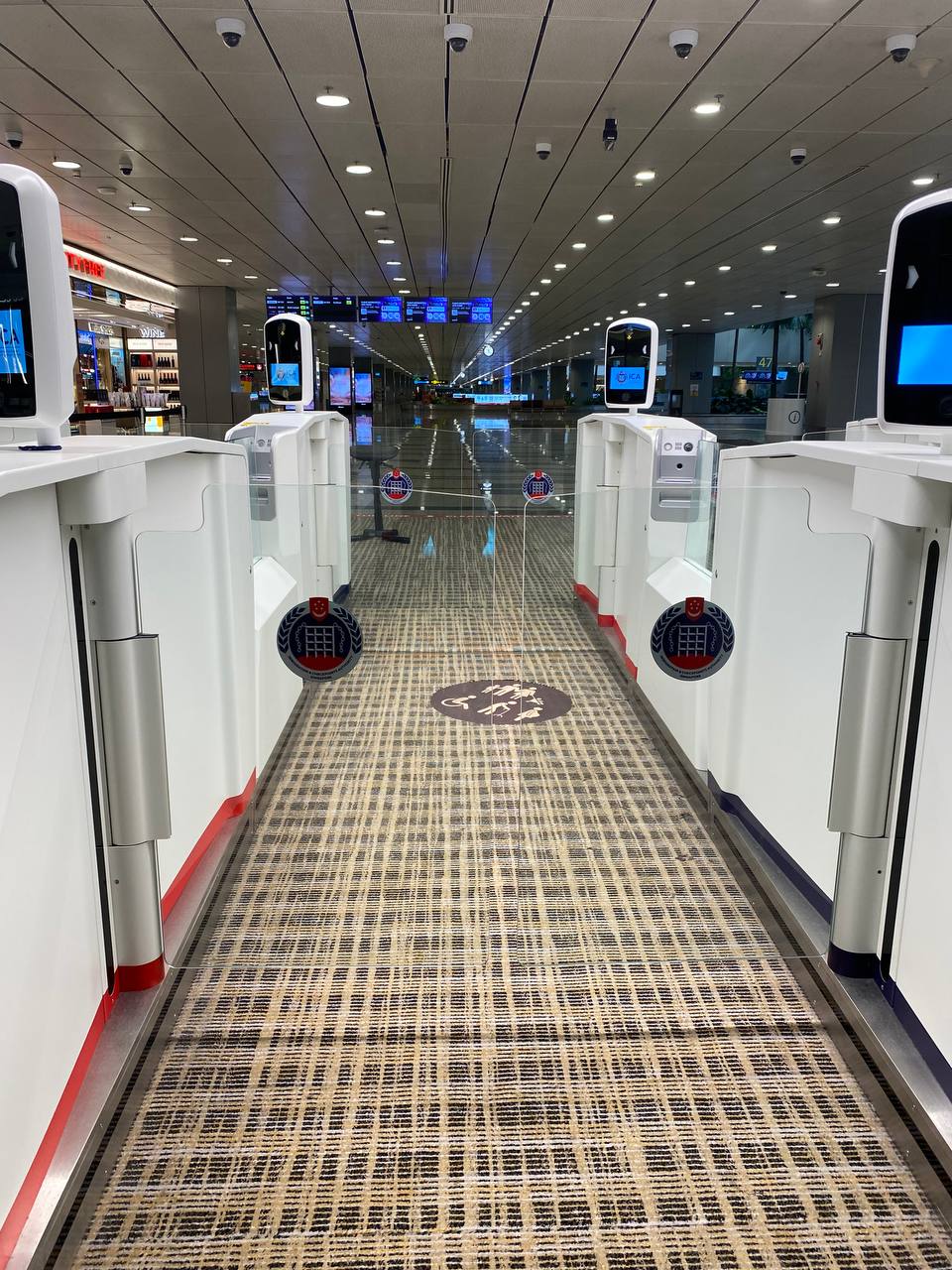 Special assistance lanes spacious enough for a family of four. Photo by Tharun Suresh.
Special assistance lanes spacious enough for a family of four. Photo by Tharun Suresh.
For Chloe Welsh, a 27-year-old Australian traveller arriving from Athens, the automated immigration process was “pretty easy” and gave her “no trouble” at all.
For Atul Sethi, a 47-year-old traveller from India who regularly flies to Singapore, it was “a pleasure” to be able to use the automated gantries.
Speaking to reporters, Sethi compared the immigration process in Singapore favourably to his experience in other countries.
He said that he had previously experienced having to queue up for nearly an hour to get past immigration elsewhere, whereas in Singapore, the process took “less than ten seconds”.
ICA estimates that the use of automated and contactless clearance will reduce immigration clearance time at the passenger halls by about 40 per cent.
ICA has also enhanced their ability to conduct traveller risk assessments. While officers were previously stationed at counters to assess travellers, ICA says that it now also uses pre-arrival data to evaluate, in advance, the risk profiles of incoming travellers.
Travellers flagged for security or immigration risks will then have to undergo further assessment by ICA officers.
Automated clearance when driving through checkpoints
ICA also provided an update on the use of QR codes for immigration clearance.
Travellers arriving and departing Singapore by car via Woodlands and Tuas Checkpoints have been able to use QR codes to clear immigration since Mar. 19, 2024.
ICA said that over 3.1 million car travellers (about 64 per cent of total car travellers) have used QR codes for immigration clearance, as of Apr. 30.
ICA said that automated lanes will be progressively rolled out at the Woodlands and Tuas Checkpoints. Full automation of car clearance will be achieved at Tuas from 2026, and at the redeveloped Woodlands checkpoint from 2028.
This means that travellers will use QR codes generated from the MyICA mobile app, and present their biometrics via contactless scanners for identity verification.
This removes the need for ICA officers to man individual clearance counters.
Faishal said in his speech that ICA will progressively introduce QR code scanning for other modes of transportation besides cars.
Top photo by Tharun Suresh
If you like what you read, follow us on Facebook, Instagram, Twitter and Telegram to get the latest updates.

